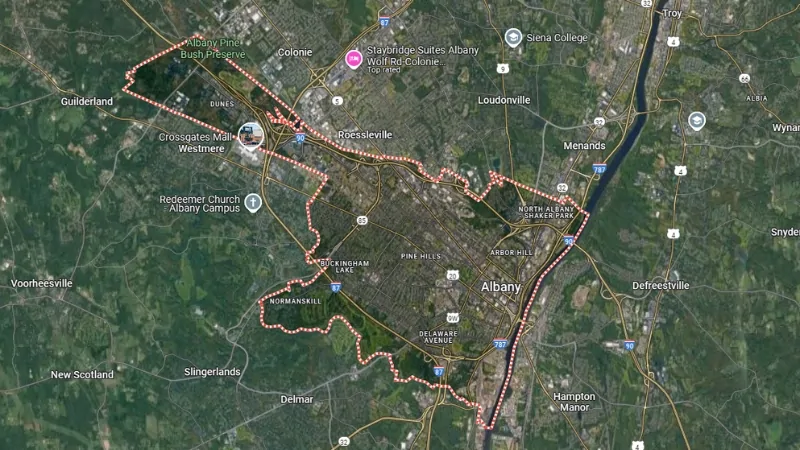Albany, the capital city of New York State, sits in the scenic Hudson Valley on the west bank of the Hudson River even if its not its biggest city.
Surrounded by mountain ranges, Albany is located about 150 miles north of New York City and roughly 32 miles south of Saratoga Lake.
Historically, Albany was a key fur trading hub and an important meeting place for Native Americans and European settlers.
Henry Hudson reached the area in 1609 while exploring the Hudson River, and in 1614, Dutch explorer Hendrick Christiaensen established Fort Nassau on Castle Island nearby.
After the fort was destroyed by flooding in 1617, Fort Orange was built, becoming a permanent settlement. When the English took over New Netherland in 1664, the settlement was renamed Albany.
In 1754, the Albany Congress, the first attempt to unite the American colonies, convened here and approved Benjamin Franklin’s Plan of Union, though it was ultimately rejected by colonial governments.
Albany became the state capital in 1797, and the city’s growth was further fueled by the completion of the Erie Canal in 1825.
Today, Albany’s deep-water river port remains a key asset, supporting thousands of jobs across New York.
Table of Contents
ToggleGeography Map Of Albany
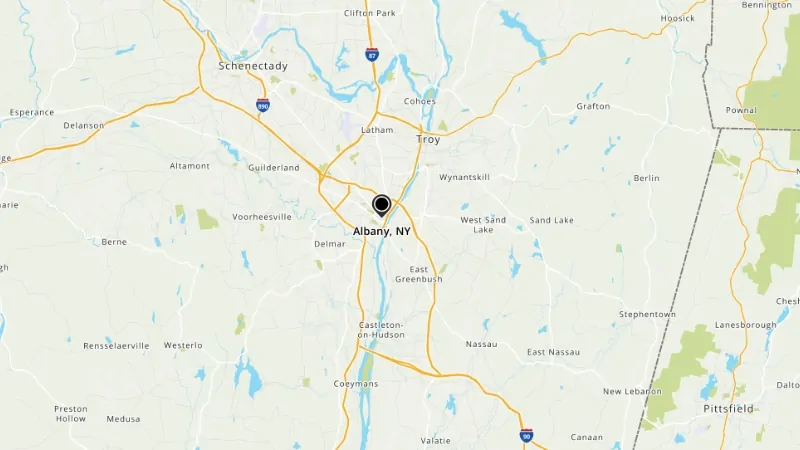
Albany, located approximately 150 miles north of New York City on the Hudson River, covers a total area of 21.8 square miles, with 21.4 square miles of land and 0.4 square miles of water.
It is bordered by Colonie to the north, Guilderland to the west, and Bethlehem to the south. Historically, waterways like Foxes Creek, Beaver Kill, and Rutten Kill ran through the city but were redirected underground in the 19th century.
The city contains four notable lakes: Buckingham Lake, Rensselaer Lake, Tivoli Lake, and Washington Park Lake.
To the west, Albany is home to the Albany Pine Bush Preserve, a unique inland pine barren ecosystem hosting endangered species, including the Karner Blue butterfly.
Climate
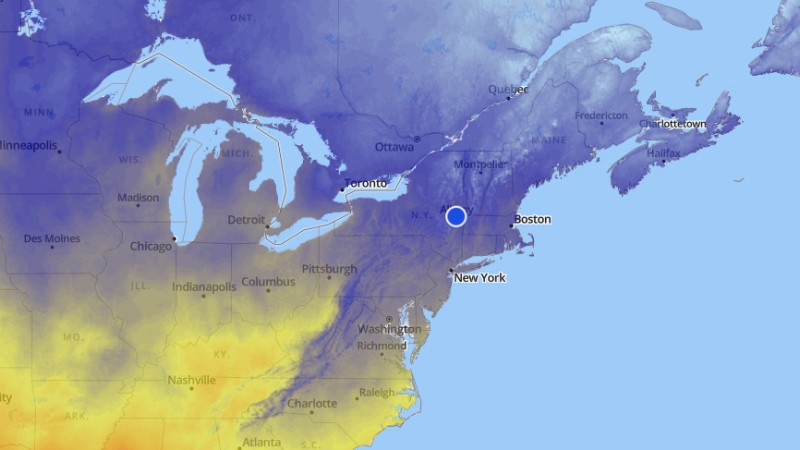
Albany has a humid continental climate with four distinct seasons, including cold, snowy winters and hot, humid summers.
Average yearly precipitation is 40.7 inches, with snowfall reaching 59.4 inches per season, though it is less intense than lake-effect snow regions further north.
Winters often see temperatures drop to 0°F or below, while summer highs can reach 90°F or more on certain days.
The record temperature range for Albany spans from -28°F to 104°F.
The city experiences frequent weather changes, influenced by Nor’easters and Alberta clippers.
Cityscape and Neighborhoods
Albany’s urban landscape features a mix of historic neighborhoods with distinct identities.
Notable areas include Arbor Hill, Center Square—an area blending residential and commercial life with nightlife, restaurants, and shops—Pine Hills, and the South End.
The city’s neighborhoods reflect Albany’s rich architectural history, including rowhouses and arts-and-crafts-style homes, such as those in the Ten Broeck Triangle, a notable part of Arbor Hill.
Population
Albany, located in Albany County, New York, has a 2025 population of 102,076, growing at 0.84% annually, reflecting a 3.44% increase since the 2020 census according to World Population Review.
It has a high rate of economic diversity with an average household income of $76,486 but a poverty rate of 23.34%.
Albany is part of the Capital District alongside Saratoga Springs, Troy, and Schenectady, forming the 4th largest MSA in New York State, with a population of approximately 870,000 in the Albany-Schenectady-Troy area and 1.17 million in the extended metropolitan area.
Category
Statistic
Population (2025)
102,076
Annual Growth Rate
0.84%
Average Household Income
$76,486
Poverty Rate
23.34%
Median Age
32 years
Population Density
~4,772 per sq mi
Capital District Population
870,000 (1.17 million in greater area)
Albany has historically been a city of immigrants with a shifting demographic landscape over the centuries.
Early settlers were German and Dutch, followed by Irish, Italian, and Polish immigrants, with African-Americans becoming a larger segment in the 20th century.
Today, Albany’s population reflects a wide array of ancestries.
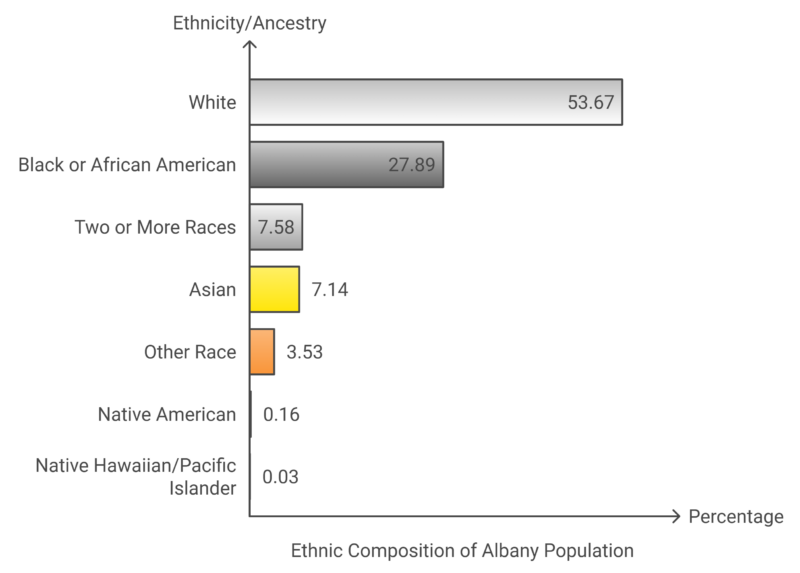
Historical Background
- Early Settlement: Albany was settled in 1614 by Dutch colonists who constructed Fort Nassau. Fort Orange followed a decade later.
- English Rule: The English took over in 1664, renaming the settlement Albany, which became New York’s capital in 1797.
- Trade and Transportation Hub: In the 18th and 19th centuries, Albany was a major trade and transportation hub, home to early railroad systems and public utilities.
- Modern Day: Albany remains one of the oldest continuously chartered cities in the U.S. and was a pioneer in public utilities and infrastructure.
City Attractions
Empire State Plaza
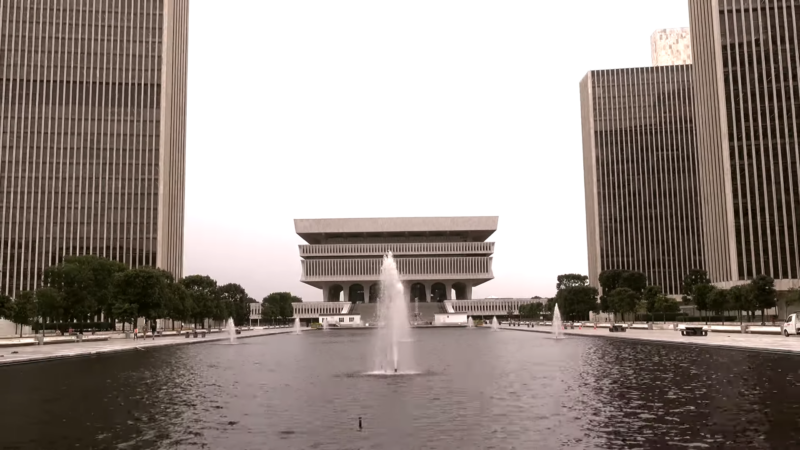
The Empire State Plaza is Albany’s architectural centerpiece, known for its striking modernist design.
This government complex, initiated by Governor Nelson Rockefeller, features several iconic structures, including The Egg, a unique performing arts venue shaped like an egg, and the Cultural Education Center, which houses the New York State Museum and State Archives.
Visitors can stroll the plaza, view outdoor sculptures, or enjoy the reflecting pools and fountains in the summer months.
The Legislative Office Building and the New York State Capitol are also part of this impressive space, making it a hub for the New York State government and history.
Albany Institute of History & Art
Founded in 1791, the Albany Institute of History & Art is one of the oldest museums in the United States. It showcases the art, culture, and history of Albany and the Upper Hudson Valley.
Highlights include an extensive collection of Hudson River School paintings, unique artifacts from Albany’s past, and fascinating exhibitions about the region’s Dutch heritage.
It’s a must-visit for history buffs and art lovers alike, providing a glimpse into the area’s rich cultural tapestry.
New York State Museum
The New York State Museum is an essential stop for anyone looking to dive into the geological, cultural, and natural history of New York.
Located in the Empire State Plaza, this museum features exhibits on the state’s Native American heritage, its role in early American history, and even its diverse ecosystems.
The museum also includes artifacts from September 11, prehistoric fossils, and an entirely recreated Adirondack cabin. Admission is free, making it a great family-friendly destination.
USS Slater
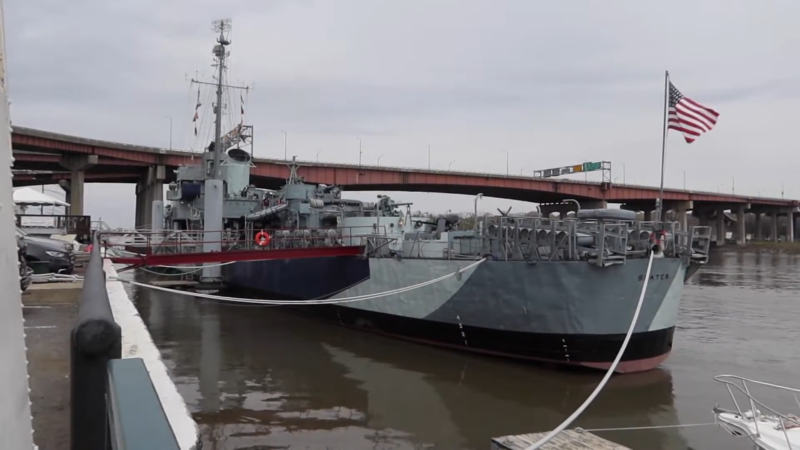
Moored on the Hudson River, the USS Slater is the last remaining Cannon-class destroyer escort still afloat in the United States.
This WWII ship-turned-museum offers guided tours that take visitors back in time to experience life aboard a warship.
Volunteers in period uniforms share stories of the ship’s history and role in protecting convoys during the war, providing an immersive, hands-on history lesson about the life of sailors.
The Egg
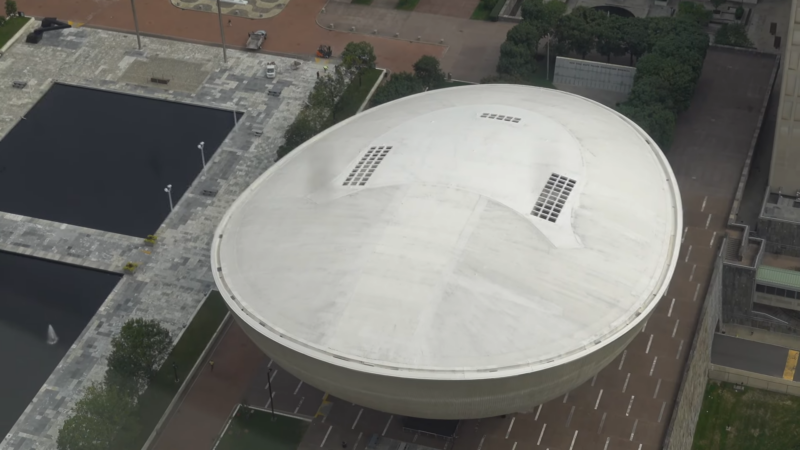
With its iconic and futuristic architecture, The Egg is one of Albany’s most recognizable structures. Its unique design, resembling an egg, is home to two theaters used for a variety of performances, including concerts, ballet, comedy shows, and theater. As part of the Empire State Plaza, The Egg adds a touch of artistry and innovation to Albany’s skyline, drawing audiences from near and far.
Palace Theatre
“The Palace theater is absolutely spectacular. Besides being a historical work of art and wonder, it’s a gorgeous and intimate venue for performances of all sorts.” ~Mark R.’s review of @PalaceAlbany (19 Clinton Avenue)https://t.co/mEoqjbsQp2 pic.twitter.com/qEbl85hKMx
— Downtown Albany BID (@AlbanyBID) October 23, 2024
The Palace Theatre is a historic gem in downtown Albany, built in 1931 with a lavish Art Deco interior. Known for its beautiful chandeliers, intricate moldings, and grand lobby, it’s a work of art in itself.
Today, it hosts a wide range of performances, from big-name concerts and comedy shows to classic films and Albany Symphony Orchestra performances. Its charm and history make it an Albany treasure.
Albany Symphony Orchestra

Founded in 1930, the Albany Symphony Orchestra is the area’s premier ensemble, performing a range of classical, contemporary, and commissioned works.
Known for its commitment to American composers and new music, the Albany Symphony draws music lovers from across the region. They often perform at both The Egg and the Palace Theatre, adding to Albany’s vibrant cultural scene.
Colonie Center
Colonie Center is Albany’s popular shopping destination, located just outside the city. This suburban shopping mall offers a mix of major retail stores, dining options, and entertainment.
It’s the perfect spot for an afternoon of shopping, featuring well-known brands as well as local boutiques, and a food court with diverse dining options.
Washington Park
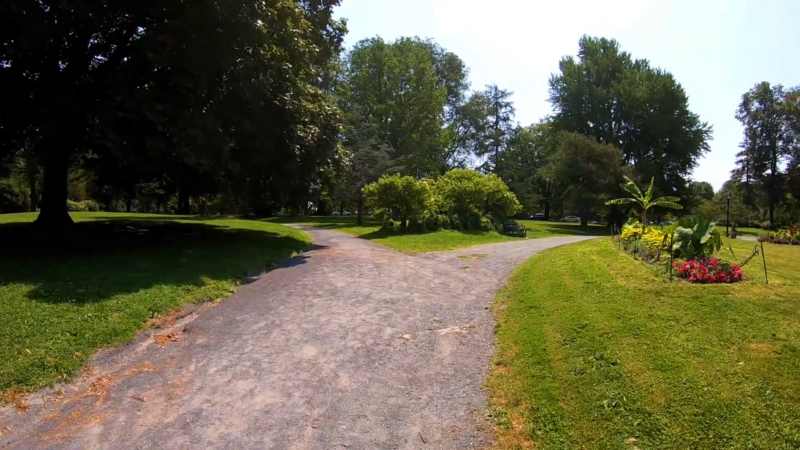
Washington Park is Albany’s urban oasis, a historic 81-acre park designed by the architects behind New York City’s Central Park. It features beautiful landscapes, walking paths, a lake, and vibrant gardens.
The park hosts the annual Tulip Festival in May, a major event featuring thousands of blooming tulips, live music, and art. In the winter, visitors enjoy ice skating on Washington Park Lake.
Thacher State Park
Perched atop the Helderberg Escarpment, Thacher State Park offers some of the best panoramic views of the Hudson Valley and Vermont’s Green Mountains.
The park is a haven for hikers, picnickers, and nature enthusiasts, with over 25 miles of trails. The views and trails make it a favorite destination for outdoor adventures close to Albany.
Times Union Center
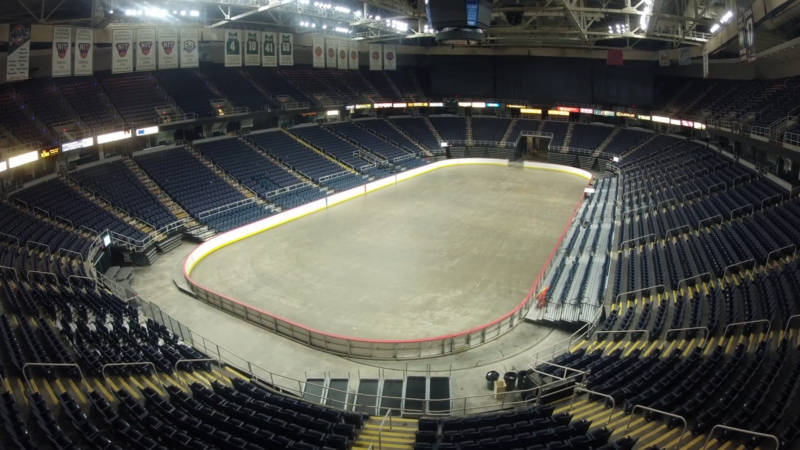
The Times Union Center is Albany’s largest indoor arena, with a seating capacity ranging from 6,000 to 17,500, depending on the event.
Home to the Siena Saints basketball team, the center also hosts major concerts, sports events, and family shows. It’s the go-to venue for large gatherings in Albany, bringing excitement and energy to the downtown area.
Albany International Airport
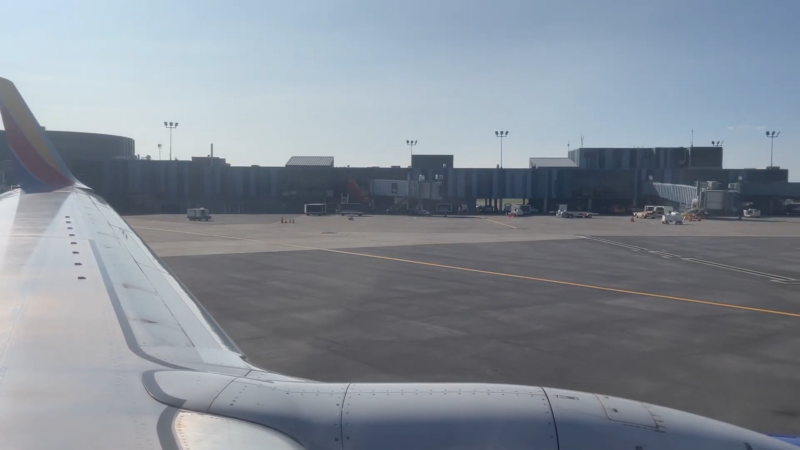
Albany International Airport (ALB) is located just six miles north of downtown Albany, offering convenient travel for residents and visitors.
As the oldest municipal airport in the U.S., it’s a gateway to the Capital District and beyond, serving a range of domestic flights and offering easy access to Albany’s city attractions. The airport connects Albany with the world, making travel a breeze.
References:
World Population Review – Albany Population


